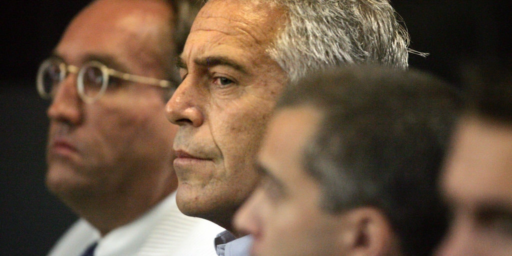Documents Link Ivins to Anthrax Attacks
Documents released today by the government offer some strong circumstantial evidence linking Army scientist Bruce Ivins to the 2001 anthrax attacks that killed five people.
Army scientist Bruce Ivins had sole custody of highly purified anthrax spores with “certain genetic mutations identical” to the poison that killed five people and rattled the nation in 2001, according to documents unsealed Wednesday in the government’s investigation. Investigators also reported tracing the type of envelopes used to send deadly spores through the mails to the lab where Ivins worked.
The scientist, depicted in the newly released papers as deeply troubled, committed suicide last week as investigators were preparing to charge him with murder in the attacks.
The documents were released as the FBI held a private briefing for families of the victims of the episode, and officials said the agency was preparing to close the case. More than 200 pages of documents were made public by the FBI, virtually all of them describing the government’s attempts to link Ivins to crimes that his lawyer has said he did not commit. Senate Sergeant at Arms Terrance Gainer, who attended a briefing for congressional staff, said FBI agents had told the group there was no evidence that anyone else was involved.
According to one affidavit made public, Ivins submitted false anthrax samples to the FBI, was unable to give investigators “an adequate explanation for his late laboratory work hours around the time of” the attacks and sought to frame an unnamed co-worker. He was also said to have received immunizations against anthrax and yellow fever in early September 2001, several weeks before the first anthrax-laced envelope was received in the mail.
I’ve paid only scant attention to the case since reports of Ivins’ suicide Friday. There’s been quite a bit of conspiracy theorizing on this, especially on the Lefty blogs, notably Glenn Greenwald’s. My guess is that these documents — or, perhaps, any evidence — won’t dispel that talk. Given how little lay readers, myself certainly included, understand the science and forensics involved here, the topic virtually defies intelligent public discussion.
This 2003 photo provided by the U.S. Army Medical Research Institute of Infectious Diseases shows Dr. Bruce E. Ivins, a bio-defense researcher at Fort Detrick, Md., participating in an awards ceremony. Ivins, the scientist who was developing a vaccine to combat anthrax, died Tuesday July 29, 2008, in an apparent suicide in a hospital in Frederick, Md. U.S. prosecutors investigating the 2001 anthrax attacks were planning to indict and seek the death penalty for Ivins in connection with mailings of the deadly anthrax toxin that killed five people.
(AP Photo/U.S.Army)






Which perhaps explains why Greenwald spends so much time with it…
ANd is it just me, or does this Ivins guy look like a cross between Tom and Dick Smothers, and Les Nessman?
The LA Times (August 2, 2008) ran a story headed:
The body of the story says:
Jim – Would you mind identifying one or two of those conspiracy theories? I’d love to see them.
Also, you think that nobody is qualified even with listening to experts to make an intelligent assessment of the FBI’s case? What do you suggest – that we just go ahead and assume, then, that they got it right (this time)? And how could a criminal trial ever have been possible if only top-level scientists could possibly assess the validity of the Government’s accusation?
Sure:
(Snicker)
Just as a casual observation, it seems to me they have a better shot at getting it right than you or I do, Glenn, even exclusive of the list that James furnished.
But then again, as for me, I’m not trying to toss everything I can at the Bush administration praying that something/anything will actually stick.
Thanks. I was already familiar with those. I just wasn’t aware they contained any conspiracy theories. I probably just didn’t read them carefully enough and missed them.
Perhaps our definition of “conspiracy” differs.
My reading of your various posts on the matter is that you believe Ivins is not the perpetrator of the anthrax attacks and that the government is essentially framing him to avoid embarrassment. Further, the media are facilitating said cover-up by serving as willing lackeys.
That’s not your position?
Is this ‘strong circumstantial evidence’ stronger than the ‘strong circumstantial evidence’ they had on Stephen Hatfill?